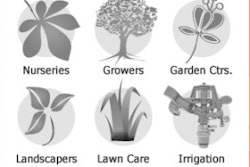Upon first glance, the words “Aloha Landscaping” based in Mendota Heights, Minnesota, might seem like a misnomer, but they actually make perfect sense once you know the story. Owner Roger Grothe’s mother is the granddaughter of Japanese immigrants and grew up in Hawaii, but she later moved to Minnesota where Grothe was born and raised. While growing up, Grothe had the great fortune to visit his grandparents in Hawaii during many summer vacations and Christmas holidays. His grandfather, known as “the orchid man of Honolulu,” loved gardening and passed on his passion to Grothe.
But Grothe’s original career plans did not involve landscaping. He earned his graduate degree in industrial psychology and spent 15 years with defense contractor Lockheed Martin and later with Northwest Airlines. After marrying his wife, Pam, Grothe began moonlighting as a landscaper for his father-in-law, a contractor by trade. By age 40, Grothe says he was burned out with the corporate lifestyle and went to his father for advice.
“Shortly before he died, my father said something really prophetic,” Grothe recalls. “He said ‘Roger, I always pictured you with a pair of work gloves in one hand and a briefcase in the other.’ He nailed it down.”
Swimming in the blue ocean
Grothe believes if someone in the landscape industry had mentored him when he was younger he might have gone into landscape architecture in college. “But I’m glad I didn’t, because the skills I have are so different than 99 percent of the landscapers out there,” he says. Grothe says he hears many landscapers who avoid bidding on government projects because they fear the red tape. “They see government and they see paperwork,” he says. “I just laugh. Coming out of defense contracting – I love paperwork. You want 10 forms signed? I’ll give you 20. You want paperwork? Come to a defense contractor. I’ll show you paperwork that will make your mind numb,” he says with a smile.
Grothe began establishing relationships with area architects and contractors and building up his portfolio. He bid on difficult projects that other landscapers shied away from. It was an idea bred by his prior career.
“Our business strategy has always been to avoid the shark-infested waters of the red ocean and swim farther out into the blue ocean where there is less competition. The whole idea of the defense mindset is to get out of competition and get into the blue ocean,” Grothe says.
Since beginning Aloha Landscaping in 1998, Grothe has focused his long-term business strategy on building relationships and doing exceptional work to build his reputation. Although Aloha is not always the low bidder, Grothe says sometimes his company gets the job because he has established good relationships with the architects, builders, and government agencies. “I believe in the law of the harvest, and understand how important it is to plant seeds today in hopes of reaping a harvest in the days to come,” he says.
Staying on top
“It never ceases to amaze me how much change there is in our industry,” Grothe says. “Every six months you need to reinvent what you’re doing because all of a sudden it could change.” Grothe says he is constantly checking to be sure he has the right people and equipment for upcoming jobs. He is also constantly evaluating his bids to be certain they are in line with his competition, but not so low they are not worth his while.
“I meet some landscapers who are shooting for 5 percent profit on projects,” he says. “Five percent doesn’t even cover my overhead. I want to make 30 percent. I don’t want to be fighting for pennies and dipping into that red ocean. For some reason people see landscaping as different from plumbing or electrical, so if you charge what it’s worth they think it’s outrageous. You have to explain to them what things really cost.”
Grothe prefers the larger, more complex projects. Not only does he like the mental challenges they present, but remaining at one jobsite for longer stretches saves time and gas wasted driving between smaller jobs. Big jobs also offer greater profit margins because there are fewer landscapers who possess the skills to do the work.
Grothe is constantly seeking better ways to do a project. When he came up with a different method to grow the vegetative mats being used on his green roof projects, he was able to bid his projects several hundred thousand dollars cheaper than other contractors. He also saw a need for a device to secure drip irrigation lines at the proper depth when installing his green roofs. When he couldn’t find a suitable product, he invented DripGrip, a molded plastic product that holds lines in place without using toxic adhesives. He also started marketing a line of engineered soil he began mixing when he saw he could save money and get the precise formula he wanted.
The benefits of Aloha
Grothe says Minnesota is a strong pro-union state, and due to the high-profile public projects he works on, he decided to go union as well. His lowest paid laborers earn $25.94 per hour, a wage surpassing foremen in most non-union companies. Although he has used the H-2B program, Grothe prefers hiring through agencies that specialize in finding jobs for people in prison work-release programs, people rehabilitated from drug dependencies, and American Indians (who represent a large population of the state). His employees appreciate the generous paychecks as well as the challenging projects and reasonable work hours.
“We keep banker’s hours,” Grothe says. “A lot of other guys are sun up to sun down, but trade unions run like clockwork. It’s nice because then you have a life. At the end of the day I want to go run or swim or see my four kids. All summer I see the trucks of these other companies going home in the dark and I think, ‘man that must get old.’ I want my people to have the same mindset I do. Work is just one part of your life. Finish the job and move on to something else.”
An intriguing portfolio
Aloha Landscaping has tackled numerous challenging projects – most of them public projects involving difficult sites, landscape artwork, special products, and a lot of red tape. Grothe is not only involved in the business end of his company, he is typically on site operating one of the skid steers or a mini track loader, building walls, or installing trees and other plants. Grothe maintains about 13 employees, including his son, Jake Grothe, who is heading up his green roof operations, and his wife Pam, who designs and produces flower shows for Aloha. “We’re an exceptionally lean, hands-on company,” he says. “Everybody’s working. Nobody is too good to put in a day’s work.” He finds that because he and his foremen are on site on a daily basis, problems are solved immediately.
One of the projects in Grothe’s portfolio is the refurbishment of Rice Park, dubbed locally as “Snoopy sculpture park.” This small triangular plot in downtown St. Paul is a well-loved urban park dedicated to Charles Schulz, St. Paul native and creator of the “Peanuts” cartoon. In addition to the usual red tape, the site involved overcoming the compact size of the site, constant vehicular traffic, and a base of solid native limestone which presented problems for running irrigation lines and meant trucking in tons of engineered soil to build up the planting beds.
Another public project that Aloha took on was the Women’s Suffrage Memorial on the grounds of the state capitol. Involving more public artwork, a combination of public and private funding, and, once again, plenty of time-consuming red tape, Grothe saw it through to completion with his usual patience and is clearly proud of the results. Although Aloha concentrates on installation and rarely gets involved with maintenance, to earn the bid Grothe agreed to maintain the project for four years because the state knew it would be too time-consuming and specialized for their landscape crews.
The Russia’s Grizzly Coast exhibit Aloha tackled at the Minnesota Zoo was the culmination of two years of persistent relationship building and hard work. As usual, the task involved intelligent bidding up front, lots of meetings and paperwork, and a bit of research on the proper plants to use in the habitats of grizzlies, otters, boars, and the endangered Amur leopard. “It’s all about gaining credibility,” Grothe says. “Now if somebody comes to us and asks if we’ve ever done anything like a zoo exhibit, I can say ‘yeah, let me show you’,” he says confidently. “But when it’s all said and done, you have to go out and do the next job just as well.”
Several years ago, his forward thinking convinced Grothe to research the burgeoning popularity of green roofs. His expansive green roof projects for General Mills, the three-tier, 20,000-square-foot Minneapolis Central Library, and the 32,648-square-foot green roof of the Shakopee Mdewakanton Sioux Community Dakotah Ice Arena have launched him to the forefront of this Midwestern trend.
Although his projects continue to grow in scope, Grothe maintains he is not particularly focused on growing his company. “By the time the masses catch up and start doing green roofs, I’ve got to be doing something else,” he says. “We don’t necessarily want to grow bigger. We want to grow smarter.”








